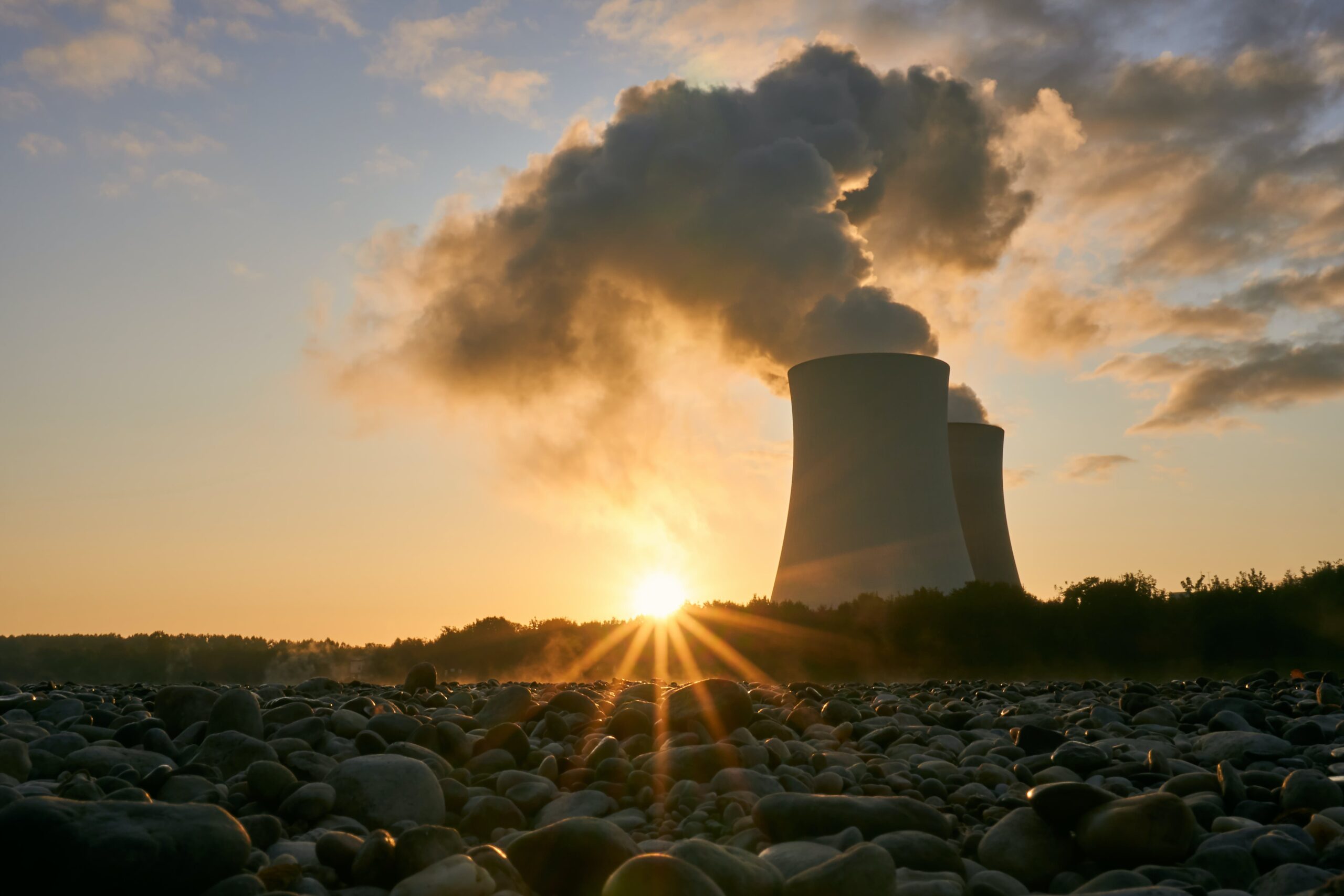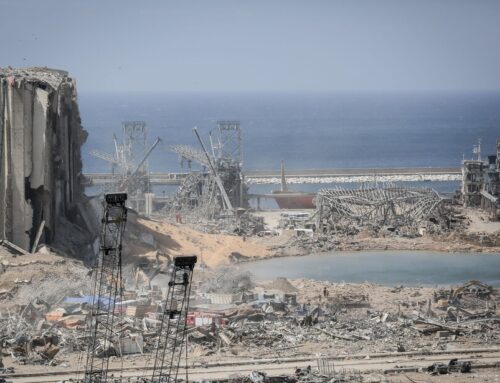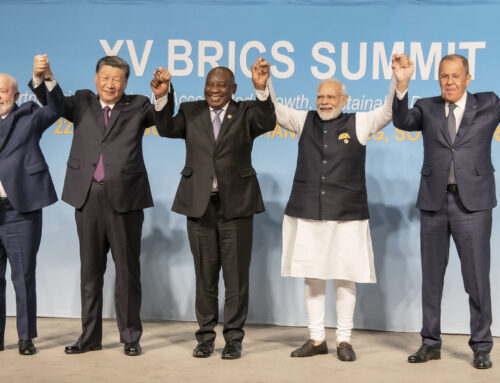energetyka jądrowa
Autor foto: Domena publiczna

Energy and Climate Policy as the Most Pressing Challenge for the New Government
December 12, 2023
Author: Sławomir Krenczyk




energetyka jądrowa
Autor foto: Domena publiczna
Energy and Climate Policy as the Most Pressing Challenge for the New Government
Author: Sławomir Krenczyk
Published: December 12, 2023
Energy and climate policy will be one of the most severe challenges for any team governing Poland over the next few decades. This is due both to its political, social and macroeconomic significance and to the enormous financial burden on the state, the economy and society that it entails. The governments of the United Right are leaving behind, on the one hand, a number of postponed transformation processes, stemming mainly from the desire to delay the shift away from coal as much as possible (see Social Contract[i]), and on the other hand, a whole list of ambitious investment plans, including the construction of Poland’s first nuclear power plant[ii]. Unfortunately, many of these plans are in the announcement phase, without detailed schedules or financing. An exception is the PEJ power plant, which is in the design phase[iii], but its funding is still not specified. The new governing coalition will have to face the tasks of accelerating the transition, making its schedule and priorities more realistic, designing an energy mix that is optimal for Poland, adjusting the transmission and distribution infrastructure, increasing competitiveness in the energy market, and above all, the challenges of financing the transition. All decisions that must be made shortly will have visible effects over much longer time frames than the next term.
There are many indications that the team preparing to take power understands the importance of energy and climate issues. The signed coalition agreement[iv] stipulates the transition’s acceleration and creates a stable law to support its equitable course. The parties announced the release of restrictions on the development of renewable sources and the development of assumptions for a coherent program for the development of nuclear energy, along with the determination of how it will be financed. The agreement also points to the need to modernise and expand transmission and distribution networks and prosumer energy as one of the cornerstones of the market. Regarding project financing, the new government pledges to unblock funds from the NRP and to allocate all ETS proceeds to investments in the transition while assuring care for low prices for households and businesses based on mechanisms of healthy competition and clear market rules. At the same time, it stressed its willingness to engage in social dialogue, respect the arrangements of the social contract and declare the fight against energy poverty. At the time of writing this analysis, a parliamentary bill freezing energy prices in 2024 has already been submitted to the Sejm unblocking onshore wind energy development[v].
Analysing global megatrends, the status of national transformational challenges, as well as the regulatory, technological and social environment, it is essential to identify several key areas where vital decisions need to be made in the near future.
1. Faster moving away from coal as an energy source
The assumption adopted by the outgoing government to move away from coal mining only in 2049[vi] is challenging to implement and justify economically. However, as a result of political calculation dictated by the need to satisfy public expectations, it will also impinge on the decisions of the future government since the parties to the coalition agreement, while declaring the departure from coal, at the same time ensuring their intention to respect the arrangements. The coal power industry, due to the growing pressure of the price of CO2 emissions[vii], is already facing the challenges of being uncompetitive with other elements of the mix. This phenomenon is expected to intensify. Polish mines have no real possibility of maintaining output at a sufficiently high level. Along with geological requirements and technological challenges, investment costs are increasing. The availability of money is declining, and labor costs and the skills gap are rising too[viii]. The experience of recent years, especially the energy crisis caused by the Russian aggression against Ukraine, has confirmed that despite the state’s excessive concern for permanently unprofitable coal mines, they do not guarantee the certainty of supply of this raw material and do not make the country independent of its imports[ix].
The parties forming the future government are unanimous in pointing out the need to accelerate the processes of abandoning coal combustion. The Civic Coalition wants to deprive coal of its status as the dominant primary energy source as early as 2030[x], and the Third Way has announced a complete departure from this fuel for 2040[xi]. An issue that is no longer in dispute in Poland today is the achievement of climate neutrality, understood as zero or negative CO2 emissions as early as 2050. However, it should be emphasised that the direction of moving away from coal fuel in the perspective of the last decades of slowing down the transition by successive Polish governments will be difficult to implement and socially costly. Here it is worth noting that the aforementioned Social Agreement involves a commitment to develop technologies related to the preservation of the role of coal during the transition period, such as IGCC, CCS/CCUS or SNG[xii]. Thus, in the background, there is a vision of neutrality competing with the existing EU one, achieved not by phasing out coal but by changing the technology of its use.
2. Continuation of the construction of Poland’s first nuclear power plant and decisions on other nuclear projects
According to the existing social consensus[xiii], nuclear power plants are the best available source for operation at the base of the electricity system, enabling its stabilisation and balancing, and consequently opening up opportunities for the expansion of renewable capacity. Therefore, the development of nuclear technology is a prerequisite for a successful transition, especially in Poland, so heavily dependent on coal today. Nuclear power is also a tool for building the country’s geopolitical position by strengthening transatlantic relations[xiv]. It is encouraging that nuclear technology has been recognised as low-carbon and supports the EU’s transformation[xv]. Unfortunately, the challenges of atomic development involve finding sources of funding for the necessary investments on a gigantic scale previously unknown in Poland.
It will be crucial to update Poland’s nuclear power program[xvi], particularly to verify its feasibility within the assumed framework, which envisions the construction of 6-9 GWe of installed capacity based on large-scale PWR reactors in just two decades. The very assumption of realising the entire plan in 2043 is very ambitious, but it is difficult to imagine its full implementation within the planned timeframe. At the moment, only the first of potentially six projects at the Lubiatowo-Kopalino site[xvii], has entered the design phase. Its launch in 2033 is already a tough challenge. The total cost estimate for the investment and its financing remains unknown. What is certain is that the first 1GWe nuclear power plant could cost more than the sum of the capitalisation of all state energy champions today[xviii]. The intense commitment of the parties, the tested AP1000 technology and the experience of the US contractors, the Westinghouse-Bechtel consortium, increase the chances, but the mobilisation of all parties to the project, precision and professionalism in the implementation of the various stages and a bit of luck are needed to meet the schedule. The experience of implementing similar investments in other countries, including the US, shows that delays in this type of project are the standard rather than the exception[xix].
Nuclear energy is also of interest beyond the official state program. The project to build a second large-scale power plant has been announced by billionaire Zygmunt Solorz, together with former assets minister Jacek Sasin[xx]. Implemented based on Korean APR1400 technology (KHNP) together with the state-owned PGE, the investment would be for a unit in Pątnów, and at the very last hurdle of the Law and Justice government, it obtained a decision in principle[xxi]. On the other hand, units of smaller capacity, 200-300 MW, not very precisely called SMRs (small modular reactors), are considered by four entities in Poland: Orlen Synthos Green Energy based on GE Hitachi’s BWRX-300 project, KGHM – NuScale[xxii], Grupa Azoty – USNC / Katowice Special Economic Zone and DB Energy – PWR-20 Last Energy[xxiii]. Despite the promising parameters of such reactors and their theoretical compatibility with the Polish system, the technology still has not reached and probably will not reach the commercialisation stage in the coming years[xxiv]. Therefore, today, these nuclear visions should be watched with attention, but also with great reserve[xxv].
3. Liberalisation of the gas market
All major political forces in Poland declare support for transforming Poland’s energy mix towards nuclear and renewable sources. In view of the prospect of weaning off further already depreciated and unsupported coal sources after 2025[xxvi], as well as because of the challenges facing the heating industry, it should be recognised that gas will play an important role in the Polish energy system for many years to come[xxvii]. The obligation to increase competitiveness in the market for this fuel stems directly from EU directives[xxviii]. In Poland, which has been dependent on Russian supplies in the past, liberalisation efforts have had little momentum, and the incorporation of PGNiG into Orlen has further strengthened the de facto monopoly[xxix]. Gas sellers attempting to operate in the domestic market are bouncing off a wall of unfavourable regulations and artificial barriers to entry. There are many examples: requirements for excessively high storage capacity, the amount of financial collateral or short deadlines for regasification at gas ports. This has resulted, among other things, in the lack of binding declarations on the use of the capacity of the second FSRU in Gdansk[xxx]. This promotes a national champion, making the de facto security of gas supply solely dependent on one state-owned company. The side effect is a lack of competition and opportunities to optimise fuel purchases on the part of customers. The new government will have to deal with the challenges of liberalising the market on the one hand and preventing energy poverty on the other. One of the electoral specifics of the Civic Coalition (87) was explicitly to freeze gas prices in 2024 for households and vulnerable customers[xxxi]. The question remains about the future of liberalisation processes in this area.
4. Accelerating the development of generation from renewable sources
The pro-coal policy of the Law and Justice government manifested itself, among other things, in the rapid and effective blocking of onshore wind power development as a result of the so-called “distance law” adopted in the first months of the right-wing government in 2016[xxxii]. Despite its partial relaxation, a large number of wind projects cannot still be implemented. The announcement of a law reducing the distance to 500 m., along with an investment facilitation package and a 5% share of local communities in power plant revenues, was explicitly formulated in the program of the Civic Coalition (item 86)[xxxiii]. Similar demands are made by the Left. As mentioned above, a parliamentary bill on the issue has already emerged, immediately generating a political dispute[xxxiv], which may indicate the risk of also moving future discussions on energy issues to the level of a non-substantive exchange of political narratives and thus paralysing them.
The new government is also inheriting the task of accelerating the development of offshore wind power plants. The current Polish Energy Policy until 2040[xxxv] sets targets of 5.9 GW offshore in seven years and 11 GW in 2040. However, according to Supreme Audit Office (, among others, these targets may not be achieved due to numerous problems[xxxvi]. Issues of supporting infrastructure development, availability of on-site competence and regulatory facilitation are key challenges for the new government in this area. Currently, projects with a total capacity of about 5.5 GW are being developed in the Baltic, while estimates of the potential of the Polish offshore zone reach up to 33 GW of capacity[xxxvii]. It is time for change, opening up new opportunities in this area.
Undoubtedly, a difficult challenge is to ensure the further development of photovoltaic sources, including prosumer sources, which already cause significant power surges in the system on sunny days, testing the limits of grid capacity[xxxviii]. Limiting the connection capacity for such sources will probably become a permanent phenomenon.
The development of RES in all directions is included in the programs of all parties preparing to take power. They postulate support for the development of sources based on sun and wind, as well as potentially particularly interesting directions in Polish conditions directions related to biogas and biomethane. The realisation of these postulates also requires significant actions in the area of grid infrastructure, reconstruction of the energy market, increasing the role of the consumer/prosumer in the system, as well as R&D expenditures, especially in the field of energy storage.
5. Network infrastructure development strategy
The country’s transmission and distribution networks were designed and built to meet the needs of centralised coal-fired power generation in the south of the country and transmission to the north under the assumption that losses are unavoidable. The intensive investment work, which has been going on for two decades, has resulted in considerable improvements in the quality of grid operation: a decrease in failure rates, minimisation of losses and building the foundations of a smart grid[xxxix]. The progress has been tremendous, but still not enough in light of the challenges of the transition, most notably the growing role of unstable and distributed renewables. Limited grid capacity and a surge in RES, including local PV installations, are already causing significant constraints. It is estimated that due to connection limits, the vast majority of ready-to-go RES projects are on hold[xl].
The new government will face challenges in developing transmission and distribution networks. Key directions include expanding connection capacity, digitisation and creating smart grids. Replacing electricity meters with remote reading devices is also a challenge. On January 1, 2023, out of more than 18.5 million meters installed, only 4 million were smart metres[xli]. Parties seeking to seize power recognise the relevance of the challenges of thoroughly modernising the grid, as evidenced, among other things, by the demands of the Left[xlii]. There are many indications that a project to spin off distribution from vertically integrated state-owned concerns to unlock additional investment opportunities for DSOs will be considered[xliii].
6. Decentralization, prosumer energy and energy storage
Decentralization processes in the energy industry are accelerating, with a trend across the European Union to strengthen the distributed energy model[xliv]. A key technological factor will be to increase the role of energy storage in the system and in local energy subsystems. A lot of work is still to be done here: the technological race on a global scale is on, in the opinion of many domestic experts, this is also an excellent opportunity for domestic innovators. It is worth creating a state system to support R&D work toward effective, scalable and efficient storage. Hydrogen technologies can play an important role in this area[xlv], although there are opinions that the potential of hydrogen is overestimated[xlvi].
The direction of decentralising energy and basing the future on local energy communities, generating and consuming energy locally, is particularly emphasised by the Civic Coalition[xlvii]. The grouping sees an opportunity to build up to 700 such clusters. This fits in with the trend of the future, based on distributed energy, which, through diversification, increases energy security for consumers and, by generating energy locally, promotes development. An interesting idea, written into the Third Way program, is to allow the purchase of renewable energy directly from private business owners, which would require a change in systems thinking in the energy law[xlviii].
The parties reaching for power point to the importance of energy storage, without which it is impossible to imagine an efficient, securely supplying renewable energy system. Unfortunately, the technologies at our disposal today are unable to provide energy storage capabilities in the quantities needed by national systems[xlix]. In view of this difficulty, some groupings are proposing to reach for accessible, albeit costly, solutions, namely pumped storage power plants, which are in line with the decisions already taken by the outgoing team[l]. It is worth examining the possibilities of using domestic scientific and business resources to develop this technological branch. With the massive potential of one of the leaders in the battery market and the awareness of the system’s needs, it is worth placing particular emphasis on this direction[li].
7. Heating[lii]
Poland has a unique resource – district heating systems, which can become an effective tool for transforming the entire economy. Today’s state of the district heating industry, particularly the high degree of dependence on coal and the low level of efficiency of some installations, needs to be more strongly suited to the requirements of the environment. Using about 40% of thermal coal and 35% of natural gas, the sector is the largest consumer of fossil fuels[liii]. At the same time, the industry lacks impetus and investment opportunities, and rising costs mean that many local, smaller, unmodernised heating plants and networks are on the verge of collapse. The new government will face the need to urgently prepare and implement a new strategy for district heating[liv] and take a series of urgent and costly corrective measures.
8. Financing the transition
According to the outgoing government’s estimates in “Poland’s Energy Policy until 2040”[lv], the total cost of the energy transition in 2021-2040 will amount to PLN 1.6 trillion. However, the document does not take into account the increase in reduction and efficiency targets resulting from the “Fit for 55” and “REPowerEU” packages and, therefore, requires an update, which will probably be done soon. Other calculations have also appeared in the public space this year, including BloombergNEF indicating that investments in the transformation of Poland’s energy mix could reach about PLN 550 billion by 2030, and EY, according to which outlays for the transformation of the energy sector, taking into account shielding measures, could reach about PLN 600 billion by 2030, and more than PLN 900 billion by 2050[lvi]. However, it seems that the cost of the total undertaking should be estimated much closer to the upper values or even higher.
The new ruling coalition identifies two primary sources of financing for the transition: unblocked funds from the National Reconstruction Plan[lvii] and ETS revenues[lviii]. These assumptions need to be operationalised and supplemented with additional sources. The issue of ensuring coverage of transition costs appears to be the most difficult challenge of the entire process.
9. Fight against energy poverty
The requirements of the energy transition and ambitious zero-carbon goals are putting a strain on the state, the economy, energy companies and customers. The rising cost of energy, especially in a society that has inherited a lack of energy-saving habits from the communist era, increases new social challenges. Energy is becoming a luxury commodity, and some consumers are increasingly rationing thermal and living comfort for economic reasons. The new ruling coalition does not intend to abandon its policy of countering energy poverty by freezing prices. On November 28, a parliamentary bill to freeze energy prices for households and vulnerable entities until the end of June 2024 appeared in the Sejm. The estimated cost is PLN 16.5 billion, the bill states[lix].
Conclusions:
- Accelerating the energy transition, as well as designing and implementing measures aimed at a new, decarbonised energy mix for Poland, is a prerequisite for maintaining the competitiveness of the Polish economy. It is, therefore, a top priority task for the new government.
- All elements of the energy value chain: generation, transmission and distribution, and energy trading, need to be updated and re-strategized. The new government faces the challenge of making up for years of delays resulting from the actions and inactions of the past few decades.
- It is important to make decisions on the continuation and acceleration of transformational projects such as nuclear projects, offshore projects, prosumer energy. Radical acceleration is required for activities related to the heating sector and the phasing out of coal mining and use.
- The government will have to act under social pressure, taking into account measures to prevent energy poverty, but at the same time strengthening market mechanisms.
Author: Sławomir Krenczyk, Executive Director at the Casimir Pulaski Foundation.
[i] Umowa Społeczna dotycząca transformacji sektora górnictwa węgla kamiennego oraz wybranych procesów transformacji województwa śląskiego, https://www.gov.pl/web/aktywa-panstwowe/umowa-spoleczna
[ii] Information about the project, https://ppej.pl/o-projekcie
[iii] During the work on the analysis, the outgoing Climate Minister issued a decision in principle at the request of PGE PAK Energia Jądrowa, the other entity planning to build a nuclear power plant: https://biznes.pap.pl/pl/news/pap/info/3513579,pge-pak-ma-decyzje-zasadnicza-mkis-na-budowe-drugiej-elektrowni-jadrowej-w-polsce-(description)
[iv] Umowa koalicyjna, https://platforma.org/upload/document/203/attachments/433/UmowaKoalicyjna.pdf
[v] Rafał Zasuń, Magdalena Skłodowska, Bartłomiej Derski, Zamrożenie cen prądu, gazu i ogrzewania. 15 mld zł wyłoży Orlen, https://wysokienapiecie.pl/94776-zamrozenie-cen-pradu-gazu-i-ogrzewania-15-mld-zl-wylozy-orlen/
[vi] Umowa Społeczna dotycząca transformacji sektora górnictwa…
[vii] „Raport KOBiZE z rynku CO2”, https://www.kobize.pl/uploads/materialy/materialy_do_pobrania/raport_co2/2023/KOBiZE_Analiza_rynku_CO2_czerwiec_2023.pdf
[viii] Skonsolidowany raport półroczny GK LW Bogdanka za I półrocze 2023 r.”, https://ri.lw.com.pl/raporty-okresowe/ih-2023
[ix] Raport MAP podsumowujący interwencyjny import i dystrybucję węgla kamiennego w sezonie grzewczym 2022/2023, https://www.gov.pl/attachment/f6eead22-16a1-489f-93bc-83fe58471d7c
[x] 100 konkretów na pierwsze 100 dni rządów!, https://100konkretow.pl/wszystkie-konkrety/
[xi] Odnawialne źródła energii – czyste powietrze i ochrona klimatu, https://polska2050.pl/odnawialne-zrodla-energii-to-czyste-powietrze-i-ochrona-klimatu/
[xii] Umowa Społeczna dotycząca transformacji sektora górnictwa…
[xiii] Public support for the construction of a nuclear power plant in Poland – November 2020 survey. (62.5% of Polish women and men support the construction of nuclear power plants in Poland.), https://www.gov.pl/web/klimat/poparcie-spoleczne-dla-budowy-elektrowni-jadrowej-w-polsce—badania-z-listopada-2020-r
[xiv] WSF: Central and Eastern Europe as a New Center of Gravity, https://warsawsecurityforum.org/2023wsf-report
[xv] MEPs back plans to boost Europe’s Net-Zero technology production, https://www.europarl.europa.eu/news/pl/press-room/20231117IPR12205/meps-back-plans-to-boost-europe-s-net-zero-technology-productio
[xvi] Program polskiej energetyki jądrowej, https://www.gov.pl/web/polski-atom/program-polskiej-energetyki-jadrowej
[xvii] Umowa na projekt pierwszej elektrowni jardowej podpisana. Premier: wiek XXI należy do, https://www.pap.pl/aktualnosci/umowa-na-projekt-pierwszej-elektrowni-jadrowej-podpisana-premier-wiek-xxi-nalezy-do
[xviii] Barbara Oksińska, Niebotyczne koszty budowy elektrowni jądrowych. Oto najnowsze wyliczenia, https://businessinsider.com.pl/biznes/niebotyczne-koszty-budowy-elektrowni-jadrowych-oto-najnowsze-wyliczenia/yx13ejc
[xix] Catherine Clifford, America’s first new nuclear reactor in nearly seven years starts operations, https://www.cnbc.com/2023/07/31/vogtle-unit-3-nuclear-reactor-long-delayed-starts-delivering-power.html
[xx] Budowa reaktorów jądrowych w Polsce. Podpisano list intencyjny, https://www.pap.pl/aktualnosci/news%2C1467366%2Cbudowa-reaktorow-jadrowych-w-polsce-podpisano-list-intencyjny.html
[xxi] PGE PAK ma decyzję zasadniczą MKiŚ na budowę drugiej elektrowni jądrowej w Polsce (opis), https://biznes.pap.pl/pl/news/pap/info/3513579,pge-pak-ma-decyzje-zasadnicza-mkis-na-budowe-drugiej-elektrowni-jadrowej-w-polsce-(opis)
[xxii] Here, however, doubts arise in the wake of NuScale’s decision to break off cooperation on the SMR project in Utah: Timothy Gardner, Manas Mishra, NuScale ends Utah project, in blow to US nuclear power ambitions, https://www.reuters.com/business/energy/nuscale-power-uamps-agree-terminate-nuclear-project-2023-11-08
[xxiii] Natalia Stępień, Małe reaktory jądrowe w Polsce. Są pierwsze lokalizacje, https://www.money.pl/gospodarka/male-reaktory-jadrowe-w-polsce-sa-pierwsze-lokalizacje-6922280487234176a.html
[xxiv] R. Kaczmarczyk, P. Hałoń, Wyzwania i potencjał reaktorów SMR w transformacji energetycznej, https://www2.deloitte.com/pl/pl/pages/energy-and-resources/articles/atom-in-action/Wyzwania-i-potencjal-reaktorow-SMR-w-transformacji-energetycznej.html
[xxv] M. Oettingen, Wiarygodność Partnera Technologicznego Kluczowa do Wdrożenia Reaktorów Jądrowych Typu SMR, https://pulaski.pl/wiarygodnosc-partnera-technologicznego-kluczowa-do-wdrozenia-reaktorow-jadrowych-typu-smr
[xxvi] A. Gawlikowska-Fyk, Po 2025r. węgiel będzie wychodził z polskiego systemu energetycznego falami – luka węglowa, https://www.forum-energii.eu/po-2025-r-wegiel-bedzie-wychodzil-z-polskiego-systemu-energetycznego-falami
[xxvii] European natural gas imports, https://www.bruegel.org/dataset/european-natural-gas-imports
[xxviii] Liberalizacja rynku gazu, https://www.ure.gov.pl/pl/paliwa-gazowe/liberalizacja-rynku-ga
[xxix] Tomasz Jóźwik, dostatnie życie gazowego monopolisty. Orlen nie ma konkurencji na rynku gazu [OPINIA], https://serwisy.gazetaprawna.pl/energetyka/artykuly/8728428,orlen-pgnig-gazowy-monopolista.html
[xxx] GAZ-SYSTEM zakończył fazę składania ofert przez Uczestników zarejestrowanych w procedurze Open Season FSRU 2, https://www.gaz-system.pl/pl/dla-mediow/komunikaty-prasowe/2023/listopad/17-11-2023-gaz-system-zakonczyl-faze-skladania-ofert-przez-uczestnikow-zarejestrowanych-w-procedurze-open-season-fsru-2.html
[xxxi] 100 konkretów na pierwsze 100 dni rządów!, https://100konkretow.pl/wszystkie-konkrety/
[xxxii] Ustawa z dnia 20 maja 2016 r. o inwestycjach w zakresie elektrowni wiatrowych, https://isap.sejm.gov.pl/isap.nsf/DocDetails.xsp?id=WDU20160000961
[xxxiii] 100 konkretów na pierwsze 100 dni rządów…
[xxxiv] Borys Budka: nie ma mowy o wywłaszczeniach pod wiatraki nikt nie będzie mógł blokować, https://www.pap.pl/aktualnosci/borys-budka-nie-ma-mowy-o-wywlaszczeniach-pod-wiatraki-nikt-nie-bedzie-mogl-blokowac
[xxxv] Polityka energetyczna Polski do 2040 r., https://www.gov.pl/web/klimat/polityka-energetyczna-polski
[xxxvi] T. Słaboszowski, R. Malcharek, M. Mieszalska, Opóźnienia w rozwoju morskiej energetyki wiatrowej – zagrożenie bezpieczeństwa kraju, https://www.nik.gov.pl/2022/05/opoznienia-w-rozwoju-morskiej-energetyki-wiatrowej-zagrozenie-bezpieczenstwa-kraju.html
[xxxvii] Nowy potencjał Bałtyku: 33 GW mocy i 20 nowych obszarów pod MFW (RAPORT), http://psew.pl/nowy-potencjal-baltyku-33-gw-mocy-i-20-nowych-obszarow-pod-mfw-raport
[xxxviii] Fotowoltaika: dlaczego panele wyłączają się w słoneczne dni?, https://www.ure.gov.pl/pl/urzad/informacje-ogolne/aktualnosci/10971,Fotowoltaika-dlaczego-panele-wylaczaja-sie-w-sloneczne-dni.html
[xxxix] Energetyka, dystrybucja, przesył, Raport 2023 PTPiREE http://www.ptpiree.pl/raporty/2023/ptpiree_raport_2023.pdf
[xl] Informacja o dostępności mocy przyłączeniowej do sieci przesyłowej, https://www.pse.pl/obszary-dzialalnosci/krajowy-system-elektroenergetyczny/informacja-o-dostepnosci-mocy-przylaczeniowej
[xli] Liczniki zdalnego odczytu – wymagania PTPiREE, https://www.smart-grids.pl/technologie/4263-liczniki-zdalnego-odczytu-wymagania-ptpiree.html
[xlii] Program Wyborczy KW Nowa Lewica, Program Wyborczy Lewicy, https://klub-lewica.org.pl/program
[xliii] Wydzielenie operatorów lekarstwem na kryzys sieciowy?, Wydzielenie operatorów lekarstwem na kryzys sieciowy?, https://wysokienapiecie.pl/94907-wydzielenie-operatorow-lekarstwem-na-kryzys-sieciowy/
[xliv] Energy and the Green Deal, https://commission.europa.eu/strategy-and-policy/priorities-2019-2024/european-green-deal/energy-and-green-deal_en
[xlv] Polska Strategia Wodorowa do roku 2030, https://www.gov.pl/web/klimat/polska-strategia-wodorowa-do-roku-2030
[xlvi] P. Przybyło, Europe’s Hydrogen Strategy Failure. Negligible Chances For Extensive Production Of Cost-Effective Green Hydrogen In Europe, https://pulaski.pl/pulaski-policy-paper-europes-hydrogen-strategy-failure-negligible-chances-for-extensive-production-of-cost-effective-green-hydrogen-in-europe-piotr-przybylo/
[xlvii] 100 konkretów na pierwsze 100 dni rządów!, 100 konkretów na pierwsze 100 dni rządów Koalicji Obywatelskiej, https://100konkretow.pl/wszystkie-konkrety/
[xlviii] Odnawialne źródła energii – czyste powietrze i ochrona klimatu, Odnawialne źródła energii – czyste powietrze i ochrona klimatu, https://polska2050.pl/odnawialne-zrodla-energii-to-czyste-powietrze-i-ochrona-klimatu/
[xlix] Raport „Wpływ rozbudowy infrastruktury magazynów energii na rozwój gospodarczy w Polsce – prognoza do 2040 r.”, https://psme.org.pl/raport
[l] Ireneusz Chojnacki, Wchodzi w życie specustawa pod wielkie inwestycje energetyczne, Elektrownie szczytowo-pompowe w Polsce. Wchodzi w życie specustawa, https://www.wnp.pl/energetyka/wchodzi-w-zycie-specustawa-pod-wielkie-inwestycje-energetyczne,726778.html
[li] Tomasz Elżbieciak, Magazyny energii coraz bardziej potrzebne polskiej energetyce, Magazyny energii coraz bardziej potrzebne polskiej energetyce, https://wysokienapiecie.pl/84719-magazyny-energii-potrzebne-energetyce/
[lii] S.Krenczyk „Raport Pułaskiego: Ciepłownictwo – strategiczny problem bezpieczeństwa energetycznego w Polsce”, https://pulaski.pl/raport-pulaskiego-cieplownictwo-strategiczny-problem-bezpieczenstwa-energetycznego-w-polsce
[liii] P.Kleinschmidt „Przyszłość bez gazu i węgla. Strategia dla sektora ciepła”, https://www.forum-energii.eu/cieplownictwo-bez-wegla-i-gazu
[liv] Strategia dla ciepłownictwa do 2030 r. z perspektywą do 2040 r., https://bip.mos.gov.pl/strategie-plany-programy/strategia-dla-cieplownictwa-do-2030-r-z-perspektywa-do-2040-r/
[lv] Polityka energetyczna Polski do 2040 r., https://www.gov.pl/web/klimat/polityka-energetyczna-polski
[lvi] Ogromne koszty polskiej transformacji energetycznej i równie ogromna luka inwestycyjna, https://www.bankier.pl/wiadomosc/Ogromne-koszty-polskiej-transformacji-energetycznej-i-rownie-ogromna-luka-inwestycyjna-8595823.html
[lvii] O Krajowym Planie Odbudowy, https://www.gov.pl/web/planodbudowy/o-kpo
[lviii] EU Emissions Trading System (EU ETS), https://climate.ec.europa.eu/eu-action/eu-emissions-trading-system-eu-ets_en
[lix] R. Zasuń, M. Skłodowska, B. Derski, op. cit.





